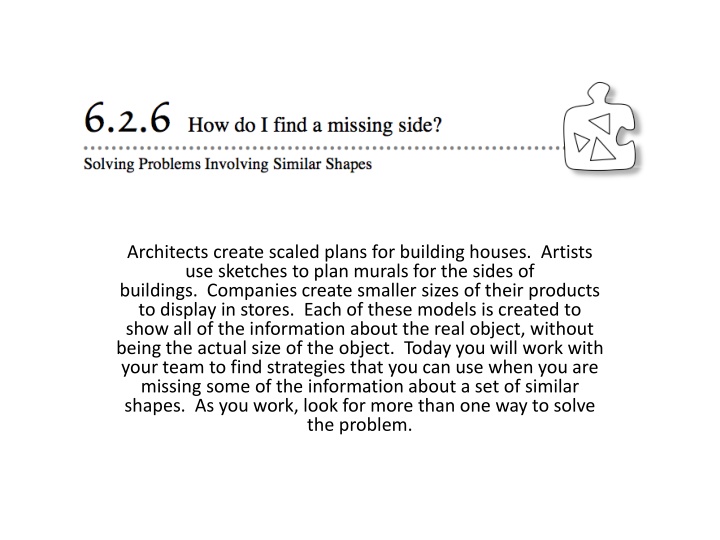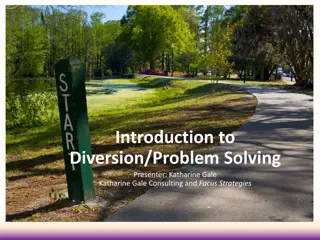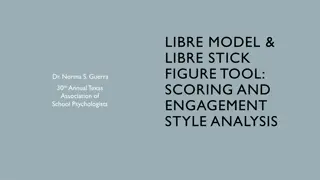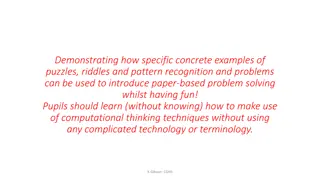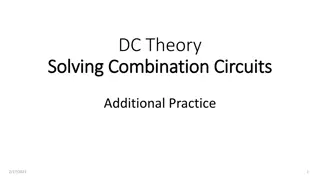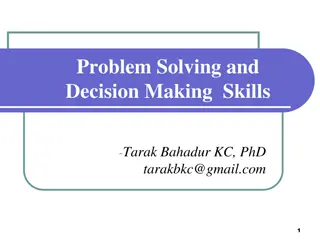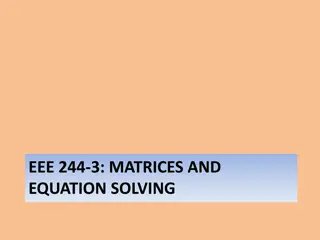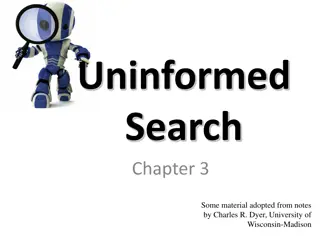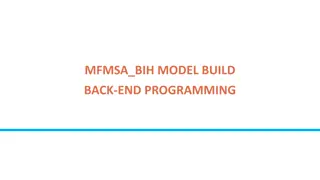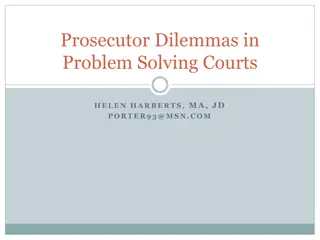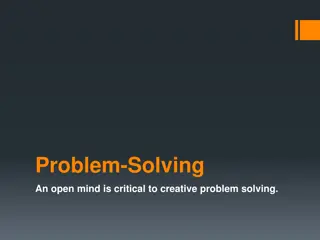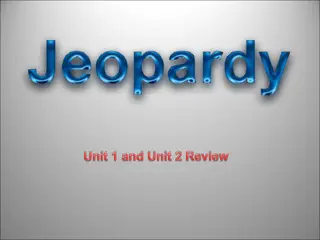Strategic Problem-Solving in Model Making
Strategies for filling in missing information in scale modeling, using examples from architecture, art, and miniature design. Solve challenges related to model trains, shape guessing, similar figures, and triangle proportions.
Uploaded on Feb 24, 2025 | 0 Views
Download Presentation

Please find below an Image/Link to download the presentation.
The content on the website is provided AS IS for your information and personal use only. It may not be sold, licensed, or shared on other websites without obtaining consent from the author.If you encounter any issues during the download, it is possible that the publisher has removed the file from their server.
You are allowed to download the files provided on this website for personal or commercial use, subject to the condition that they are used lawfully. All files are the property of their respective owners.
The content on the website is provided AS IS for your information and personal use only. It may not be sold, licensed, or shared on other websites without obtaining consent from the author.
E N D
Presentation Transcript
Architects create scaled plans for building houses. Artists use sketches to plan murals for the sides of buildings. Companies create smaller sizes of their products to display in stores. Each of these models is created to show all of the information about the real object, without being the actual size of the object. Today you will work with your team to find strategies that you can use when you are missing some of the information about a set of similar shapes. As you work, look for more than one way to solve the problem.
6-98. MODEL TRAINS Kenen loves trains, especially those that run on narrow- gauge tracks. (The gauge of a track measures how far apart the rails are.) He has decided to build a model train of the Rio Grande, a popular narrow-gauge train. Use the following information to help him know how big his model should be: The real track has a gauge of 3 feet (36 inches). - His model railroad track has a gauge of 3 - The Rio Grande train he wants to model has driving wheels that measure 44 inches high. Your Task: With your team, discuss what you know about the model train Kenen will build. What scale factor should he use? What will be the height of the driving wheels of his model? Be prepared to share your strategies with the class. 4inches.
6-99. Heather and Cindy are playing Guess My Shape. Heather has to describe a shape to Cindy accurately enough so that Cindy can draw it without ever seeing the shape. Heather gives Cindy these clues: Clue #1: The shape is similar to a rectangle with a base of 7 cm and a height of 4 cm. Clue #2: The shape is five times larger than the shape it is similar to. Has Heather given Cindy enough information to draw the shape? If so, sketch the shape on your paper. If not, write a question to ask Heather to get the additional information you need. Use what you know about similar shapes to write a set of Guess My Shape clues to describe each of the mystery shapes below. Your clues should be complete enough for someone in another class to be able to read them and draw the shape. Be sure to include at least one clue about the relationship between the mystery shape and a similar shape. a) b)
6-100. Nick enlarged figure A at right so that it became the similar figure B. His diagrams are shown at right. a) Write all of the ratios that compare the corresponding sides of figure B to figure A. b) What is the relationship between these ratios? How do you know? c) Use two different ways to find the value of x in this quadrilateral. Does your solution seem reasonable? Be ready to share your strategies with the class.
6-101. Fatima solved for p in the diagram of similar triangles below and got p = 30. Looking at her answer, she knows she made a mistake. What would make Fatima think that her answer is wrong?
6-102. LEARNING LOG In your Learning Log, write a description about how to find the missing side of a similar shape. Be specific about your strategy and include a picture with labels. Put today s date on your entry and title it Finding Missing Sides of Similar Shapes.
Scale Factor A scale factor is a ratio that describes how two quantities or lengths are related. A scale factor that describes how two similar shapes are related can be found by writing a ratio between any pair of corresponding sides as .
For example, the two similar triangles at right are related by a scale factor of lengths of the new triangle can be found by multiplying the corresponding side lengths of the original triangle by 5 4. A scale factor greater than one enlarges a shape (makes it larger). A scale factor between zero and one reduces a shape (makes it smaller). If a scale factor is equal to one, the two similar shapes are identical and are called congruent. 5 4because the side
